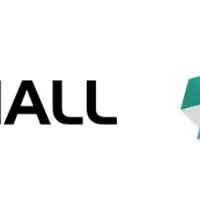
Global Football Apparel Market Projected to Surge to $3.66 Billion by 2029
The latest report from Technavio foresees substantial growth in the global football apparel market, with an estimated increase of approximately USD 3.66 billion from 2025 to 2029. This translates to a compound annual growth rate (CAGR) of 5.8% over the forecast period. A significant factor propelling this market growth is the surging demand for jerseys flaunted by beloved football players, combined with a notable rise in brand endorsements from celebrities, drawing in more fans and consumers.
The football apparel market encompasses a variety of products, including shirts, shorts, and accessories designed for different age groups, from children to adults and seniors. With the increasing participation in football and a booming athleisure trend where sports apparel is often worn for casual outings, brands are stepping up their game by introducing innovative designs that resonate with consumers while focusing on performance and comfort.
Market Dynamics
One of the main drivers of growth in the football apparel sector is the integration of digital technologies and platforms. Consumers are now able to utilize augmented reality (AR) to virtually try on kits, boots, and other apparel before making purchases. This modern shopping experience is empowering fans and taking their engagement to new heights. Meanwhile, a growing awareness of sustainability is pushing brands to create eco-friendly merchandise using recycled polyester and biodegradable materials, further appealing to environmentally conscious consumers.
As player sponsorships continue to intensify, the impact of celebrity endorsements cannot be stressed enough. Football clubs and players are capitalizing on this trend by launching exclusive, limited-edition jerseys, fostering a sense of urgency among fans to make a purchase. For instance, collaborations with high-profile players have proven effective, as evidenced by Nike's lucrative endorsement deals that can soar to USD 14.4 million per year. Many top clubs, such as PSG and Bayern Munich, are also seeking to strengthen their brand identity, reflecting the crossover between sports and fashion.
Despite these promising growth prospects, challenges remain. The prevalence of counterfeit products in the market has emerged as a serious concern, diminishing profit margins and damaging brand reputations. Reports from the National Intellectual Property Rights Coordination Center highlight seizures of counterfeit goods worth millions, a stark reminder of the ongoing battle against imitation merchandise. The rise of e-commerce coupled with the expanding awareness of sports among consumers has made it imperative for manufacturers to remain vigilant against counterfeit threats.
Regional Insights
When looking at regional performance, Europe stands out as a key contributor, commanding over 55% of the market share. Major countries contributing to this growth include Germany, the UK, France, and Italy. However, the demand for football apparel is not limited to Europe; there’s increasing interest from regions like the Asia-Pacific and North America, signifying a global interest in football culture. Emerging trends within these markets indicate a push for performance-driven apparel, boasting features such as moisture-wicking technology and flexible designs suited for both on-field and off-field activities.
Future Outlook
With the forecasted annual growth and continuous evolution powered by AI and digital interfaces, the football apparel market appears poised for a bright future. The increasing integration of smart textiles, personalization options, and online engagement tools paints a picture of a market that not only thrives on traditional aspects of fan culture but also adapts to modern consumer preferences. Moreover, as technology advances, so does the opportunity for innovative marketing strategies, making the football apparel sector an exciting field to watch.
In conclusion, as the football apparel market experiences transformative changes fueled by technology and a passion for the sport, it opens up numerous opportunities for brands and manufacturers. By focusing on quality, consumer engagement, and brand prestige, key players are well-positioned to capitalize on this promising growth trajectory.
The football apparel market encompasses a variety of products, including shirts, shorts, and accessories designed for different age groups, from children to adults and seniors. With the increasing participation in football and a booming athleisure trend where sports apparel is often worn for casual outings, brands are stepping up their game by introducing innovative designs that resonate with consumers while focusing on performance and comfort.
Market Dynamics
One of the main drivers of growth in the football apparel sector is the integration of digital technologies and platforms. Consumers are now able to utilize augmented reality (AR) to virtually try on kits, boots, and other apparel before making purchases. This modern shopping experience is empowering fans and taking their engagement to new heights. Meanwhile, a growing awareness of sustainability is pushing brands to create eco-friendly merchandise using recycled polyester and biodegradable materials, further appealing to environmentally conscious consumers.
As player sponsorships continue to intensify, the impact of celebrity endorsements cannot be stressed enough. Football clubs and players are capitalizing on this trend by launching exclusive, limited-edition jerseys, fostering a sense of urgency among fans to make a purchase. For instance, collaborations with high-profile players have proven effective, as evidenced by Nike's lucrative endorsement deals that can soar to USD 14.4 million per year. Many top clubs, such as PSG and Bayern Munich, are also seeking to strengthen their brand identity, reflecting the crossover between sports and fashion.
Despite these promising growth prospects, challenges remain. The prevalence of counterfeit products in the market has emerged as a serious concern, diminishing profit margins and damaging brand reputations. Reports from the National Intellectual Property Rights Coordination Center highlight seizures of counterfeit goods worth millions, a stark reminder of the ongoing battle against imitation merchandise. The rise of e-commerce coupled with the expanding awareness of sports among consumers has made it imperative for manufacturers to remain vigilant against counterfeit threats.
Regional Insights
When looking at regional performance, Europe stands out as a key contributor, commanding over 55% of the market share. Major countries contributing to this growth include Germany, the UK, France, and Italy. However, the demand for football apparel is not limited to Europe; there’s increasing interest from regions like the Asia-Pacific and North America, signifying a global interest in football culture. Emerging trends within these markets indicate a push for performance-driven apparel, boasting features such as moisture-wicking technology and flexible designs suited for both on-field and off-field activities.
Future Outlook
With the forecasted annual growth and continuous evolution powered by AI and digital interfaces, the football apparel market appears poised for a bright future. The increasing integration of smart textiles, personalization options, and online engagement tools paints a picture of a market that not only thrives on traditional aspects of fan culture but also adapts to modern consumer preferences. Moreover, as technology advances, so does the opportunity for innovative marketing strategies, making the football apparel sector an exciting field to watch.
In conclusion, as the football apparel market experiences transformative changes fueled by technology and a passion for the sport, it opens up numerous opportunities for brands and manufacturers. By focusing on quality, consumer engagement, and brand prestige, key players are well-positioned to capitalize on this promising growth trajectory.
Topics Consumer Products & Retail)










【About Using Articles】
You can freely use the title and article content by linking to the page where the article is posted.
※ Images cannot be used.
【About Links】
Links are free to use.